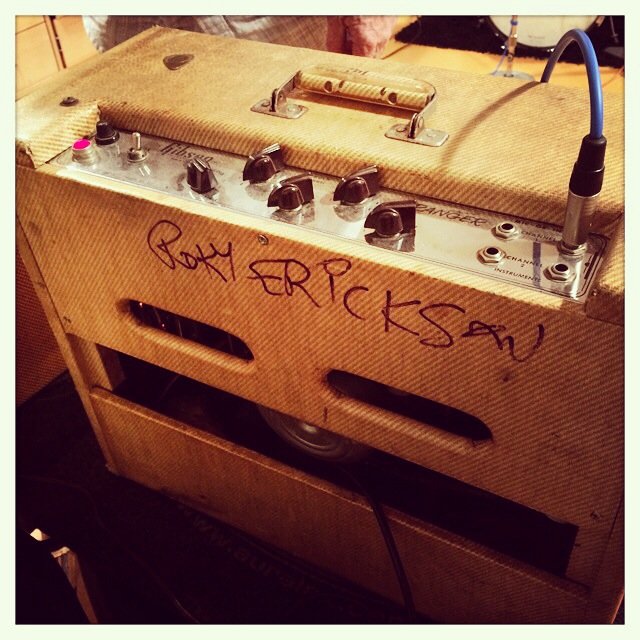The story of lockdown part I begins long before the pandemic.
in 2015, I did a session with my friend Pete Curry and we improvised a few basic blues numbers which I was going to keep in my library for licensing. We did the basic tracks in one lightening fast and very spirited recording session during which I had the opportunity to record with Roky Erickson’s Gibson amp. We had a blast. So much of a blast that I never could quite return to that headspace and complete the tracks so they languished “in the vaults” for quite a while…
Roky Erickson’s amp featured on all the rhythm guitar tracks on lockdown pt I
Pete Curry Tracking Lockdown with his minimal mic set up.
a little mic shoot out for bass. We ended up going di through an old altec though
Flash forward to the pandemic. Having just relocated to a new town (Portland, Oregon) I was not yet settled when everything came crashing down. The prospect of playing shows felt indefinitely impossible and so began a long period of self-reflection. What did I love about shows? I came to some new conclusions.
For me, in this band, there is a subtle form of analog communication I want to convey that maybe at times runs contrary to our very fast, digital world. Stories told without words. I started to think about the blues as story telling. I thought about how very simple chord progressions shifted the focus to the the “story” you tell with the notes.
the very modest garage of my rental which had a very specific sonic characteristic heard on all the leads on lockdown pt I
I set out on imagining I was playing shows and “storytelling” just as I had in the past. I dug up the old Pete curry tracks and played to them for a couple days. I was in a rental at the time and used its unique garage in the sound by far-micing the cabinet with a figure 8 style reslo ribbon microphone.
That’s fancy talk for saying that I found a way to capture the room in the microphone to make it sound very “live”
Making the room part of the sound, I finally completed the original Pete Curry recordings in a way that did Justice to the original intent. With the addition of the acoustic number appropriately titled, “Quarantine” (which I recorded deep into the pandemic) Lockdown pt I was complete.












